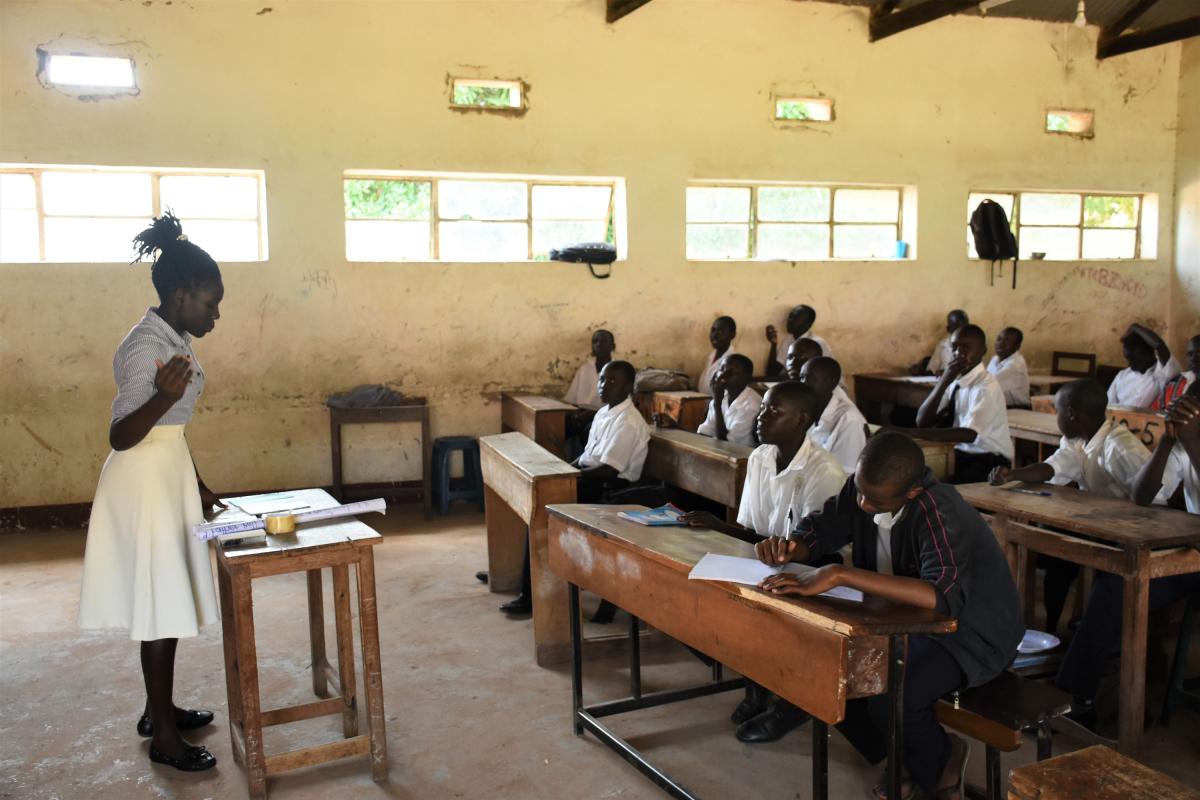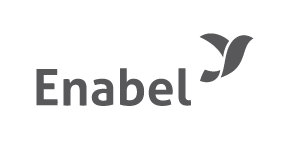Practice Makes Perfect with the Continuous School Practice Pilot System in the National Teachers’ Colleges
“My first experience as a teacher
was not an easy one. I stood in front of the classroom filled with students and
I trembled,” says 20-year-old Gasi Joseline. She is one of the many teacher
trainees striving to join the teaching profession by studying a Diploma in
Education Secondary (DES) at National Teachers’ College Muni. Today, as she
takes her final Examination School Practice, she stands in front of a class of
50 students, confident and full of purpose as her lesson makes for one of the
most engaging classes at St. Josephine’s College Ombachi secondary school.
When asked how she managed to
transform herself from a timid teacher trainee to a more confident and skilled
one, she explains, “experience is the best teacher!” This experience came in the form of a pilot
system known as Continuous School Practice.
While school practice is something
that exists in the teaching profession, it is usually something that teacher
trainees get very little or no experience of unless in the form of an
examination scheduled in the study curriculum known as Examination School
Practice. This version of the school practice happens at the end of each year
and teacher trainees are graded on their practical teaching skills which they only
get to rehearse for the very first time in an actual classroom. Something that the majority of the teacher trainees are not prepared for.
This is why Enabel’s Teacher
Training Education (TTE) project has introduced a pilot system known as
Continuous School Practice that provides teacher trainees with more
opportunities to practice their teaching methods and improve their skills
before they take on their final Examination School Practice.
Continuous School Practice (CSP) provides
the much-needed hands-on experience teacher trainees need. This concept of
school practice is conducted on a more regular basis and is constructed in a
classroom setting where teachers get to interact with actual students and
practice their teaching skills.
HOW CSP
WORKS
In order for this to work, National
Teachers Colleges have incorporated the CSP pilot system into the first-year
student’s curriculum and created a collaboration with a network of secondary
schools surrounding the college. This allows the teacher trainees time and
opportunity to get involved in regular school practice.
But that is not all. CSP is a progressive
system and follows a number of different steps to fully equip teacher trainees
with the best practice they can get. The first step is the theory phase which
involves methods courses and takes place in the National Teachers’ College.
Here, Teacher trainees are introduced to different teaching methodologies that
involve positive discipline and learner-centered methodologies such as Active
Teaching and Learning (ATL).
This is then followed by the
observation phase. Teacher trainees at this point observe lessons illustrating
the methods courses taught in phase one of CSP. This observation is conducted
in both NTCs through demonstration lessons by lecturers and in surrounding
secondary schools through classroom observations conducted by teachers. This
gives the teacher trainees a chance to reflect on how learner methodologies are
implemented in a classroom and from this they develop schemes of work, lesson
plans and instructional materials for their lessons also known as teaching
portfolios.
Once this has been achieved, the teacher
trainees’ step into the micro-teaching phase. This phase encourages students to
develop specific skills and behaviors by practicing within small groups of
their peers at the college and small groups of students at secondary
schools.
And then comes the final step of CSP;
the teaching practice. During this phase, the teacher trainee conducts a lesson
in a surrounding secondary school. This is done in the presence of a few of
his/her peers and the secondary school teacher in order to provide feedback to
their practicing teacher trainee after the session.
IMPACT OF
CSP
So far, approximately 2192 teacher
trainees across the 5 National Teachers’ Colleges have undergone the Continuous
School Practice system with many attesting to its benefits.
Fred Abel, a teacher trainee from
NTC Mubende acknowledged that CSP has introduced him to the practical part of
teaching and given him the courage to stand before a classroom and teach
confidently.
Confidence is an important aspect that
every teacher must have and this comes with regular teaching practice that the
teacher trainees undergo during CSP. However, teacher trainees develop much
more than confidence, they develop competence.
Joseline an English Teacher Trainee
from NTC Muni shared a more about the skills she gained. “CSP gave me the
chance to put into practice the Active Teaching and Learning methods that were
introduced to us in the College. But you can’t know how these teaching
methodologies are applied unless you have practiced it through CSP.” She noted.
A recent survey on the progress of
this pilot system indicated an improvement in the skills of teacher trainees by
evaluating their performance in the Final Examination School Practice that CSP
helped prepare them for. More than 50% of the teacher trainees confirmed an
improvement in their Final Examination School Practice results with the majority of
students scoring a high pass mark between 70-90%.
However, CSP is doing much more than
preparing teacher trainees for their profession, it is also improving the
skills and workmanship of the current teachers. Both teachers and lecturers
from partner secondary schools and the National Teachers’ Colleges respectively
are adopting the use of teaching portfolios to improve their teaching skills.
According to Okumu Benjamin, the
Director of studies from Gulu Secondary School, teachers are being challenged
to be better and do better. He adds, “There a certain thing I used not to do
like keeping a well-organized teaching portfolio. I used to teach with my
notes. But today, it feels improper if I have no work plan and my students are
learning better because of it.”
A teaching portfolio is referred to
as a collection of information on teaching responsibilities, goals and
achievements and evidence of effective teaching. This portfolio basically acts
as a work plan that guides a teacher on how to conduct their lesson in the most
effective way.
While the goal here, is to improve
secondary teacher education, it is worth noting that Continuous School Practice
is the missing link in teacher training that helps make the move from theory to
practical teaching. It has provided teacher trainees with hands-on experience
to build on their teaching skills such as lesson preparation, classroom
management, the practice of Active Teaching and Learning and lesson delivery, which
are all key to effective teaching and learning.
Latest news from this project
No news

